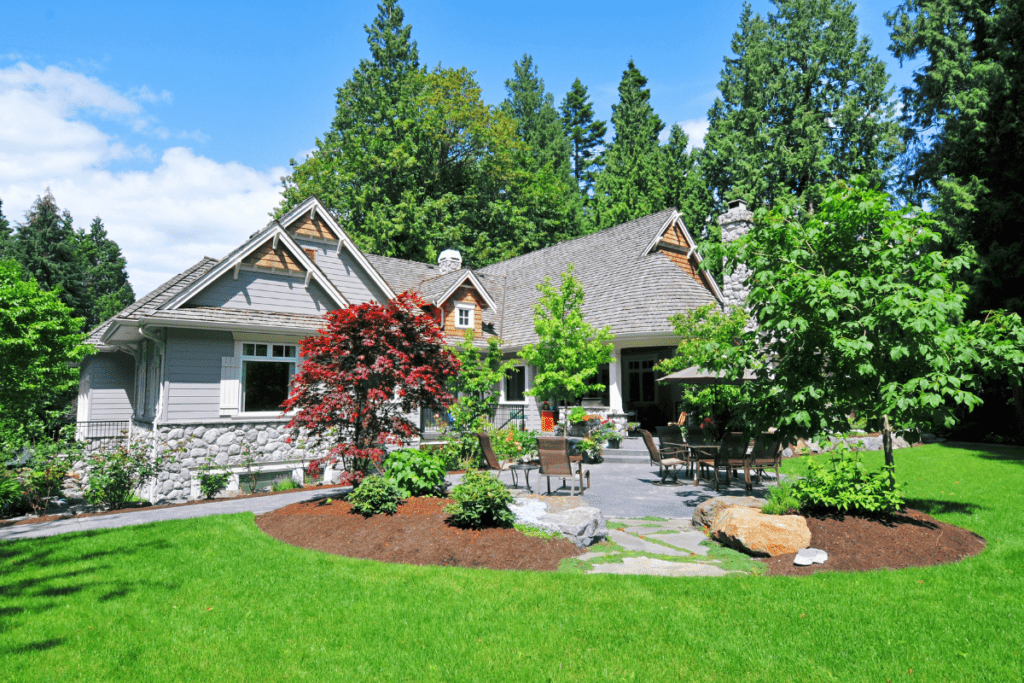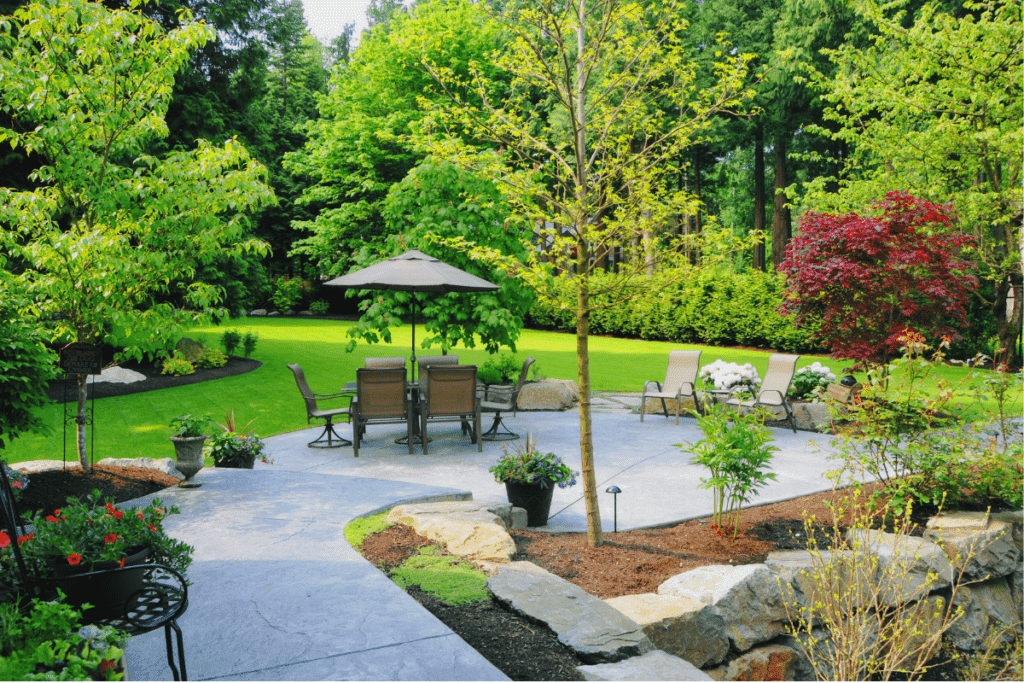Whether you’re an HOA homeowner, Board member, or property manager, you’ve probably wondered about your community’s landscaping policies. What kinds of trees can be planted, in what locations, and to what heights? How meticulous must you be in pruning plants and bushes? What are the requirements for keeping the lawn mowed? What are the consequences of violating any of the landscaping rules in your homeowners association?
The reality is that the policies concerning landscapes, trees, and general property upkeep can vary quite a bit from one association to the next, which means it can be a little confusing to know what is and isn’t allowed in your community.

First and foremost, it’s important to understand why landscaping guidelines exist in the first place. Such rules can seem arbitrary, but actually, the intention is to preserve property values by ensuring a neat, uniform appearance throughout the neighborhood. Everyone’s property values rise when all the lots look similarly well-maintained and properly cared for, without any properties that stick out like sore thumbs.
As for where these policies and regulations can be found, you can always start by perusing the governing documents of your HOA, which should be readily available to all property owners. If you still have questions, reach out to some of your contacts on the HOA Board.
In this post, we’ll summarize some of the most common types of HOA landscaping rules. If you live in the Carolinas and have additional questions, feel free to contact Kuester Management Group directly. We proudly offer HOA management in Huntersville NC, Charlotte NC, Myrtle Beach SC, and HOA Management in Fort Mill SC.
Common Types of HOA Landscape Maintenance Standards
Here are some examples of the landscaping policies that might be part of your HOA bylaws.
1) Required plant palettes.
Some HOA communities will actually provide a list of approved plant types; residents are not allowed to plant anything that’s not on this list. This is true whether you’re doing the planting yourself, or working with a landscaping contractor.
Again, the goal here is that properties all look consistent, or at the very least that the types of trees, plants, and leaves you see all complement one another. Additionally, these policies help ensure that the neighborhood is not taken over by invasive species… plants that can quickly spread through the neighborhood and crowd out other species. Indeed, a required plant palette can actually help keep the community’s weed problem under control.
Most HOA owners are happy to comply with these rules, in the same way that they are happy to stick with the list of pre-approved exterior paint colors.

2) Limits on furniture and sculptures.
Another common regulation is a general limit on the number and types of lawn furniture and lawn sculptures that property owners can have.
Once more, this is really a matter of uniformity. The whole neighborhood will look neater and tidier when nobody has a big, garish sculpture on their front lawn, throwing off the visual consistency of the surrounding yards.
In much the same way, there may be some limits on where homeowners can place lawn furniture. These rules are usually restricted to the front yard; homeowners should have more freedom to set up seats, benches, tables, and furniture in the backyard.
3) Limits on personal gardens.
An HOA may also limit the type of personal gardening that homeowners can do.
While small herb gardens are usually no problem, larger fruit and vegetable gardens can be problematic. There’s the issue of aesthetics, but also issues with gardens attracting rodents and plants. Gardens can frankly be eyesores, too, and don’t necessarily enhance the resale value of the property. Add in the risk of wildfires and you can see why some HOAs look askance at personal gardens.
If your HOA community limits personal gardening, you might consider creating a communal garden space, allowing the green thumbs in your association a chance to get elbow-deep in soil.
4) Limits on tree removal.
Sometimes, homeowners may have a perfectly good reason to remove a tree. Maybe it’s sick, or it blocks one of their front-facing windows.
In other instances, homeowners may not have good reason to remove the tree. And in some cases, it may be a tree that actually provides a lot of aesthetic value to the entire community.
In short, it may be in the best interests of the HOA to have a review and approval process in place. Maybe, before having a tree taken out, homeowners should be required to run it by the HOA’s landscaping committee.
5) Limits on fencing.
Fencing might also fall under the banner of the HOA landscaping policy. For proper aesthetics, and to make certain that one homeowner isn’t overstepping their property boundaries, it may be wise to require all fencing designs to be submitted to the landscape committee for review.

Other Types of Landscaping Regulations
These are merely some of the most typical examples of HOA landscaping restrictions. Some communities will also put more general guidelines in place to ensure residents are keeping their properties well-maintained. These guidelines may touch on topics including landscape irrigation systems, mulch, fertilization, when and how often to water the lawn, local landscape company contracts, restrictions on certain plant species, community-wide efforts in water conservation, policies for how to dispose of grass clippings, and any number of other maintenance requirements.
Frequently Asked Questions
It varies from community to community, but some HOAs will have limitations on personal gardening.
What should not be included in a community garden?
Most community gardens ban the use of pesticides and herbicides, and may also limit the use of weed whackers and other power tools. Certain types of chemically enhanced fertilizers might also be off-limits.
Can I grow plants on my neighbor’s fence?
Generally speaking, your neighbor has every right to insist that the plant life does not hang over his/her property line. So long as it’s purely on your side of the fence, there probably won’t be an issue.
Do I need HOA approval for landscaping?
It depends on the HOA, but it’s pretty common to require landscaping committee approval for certain activities.

